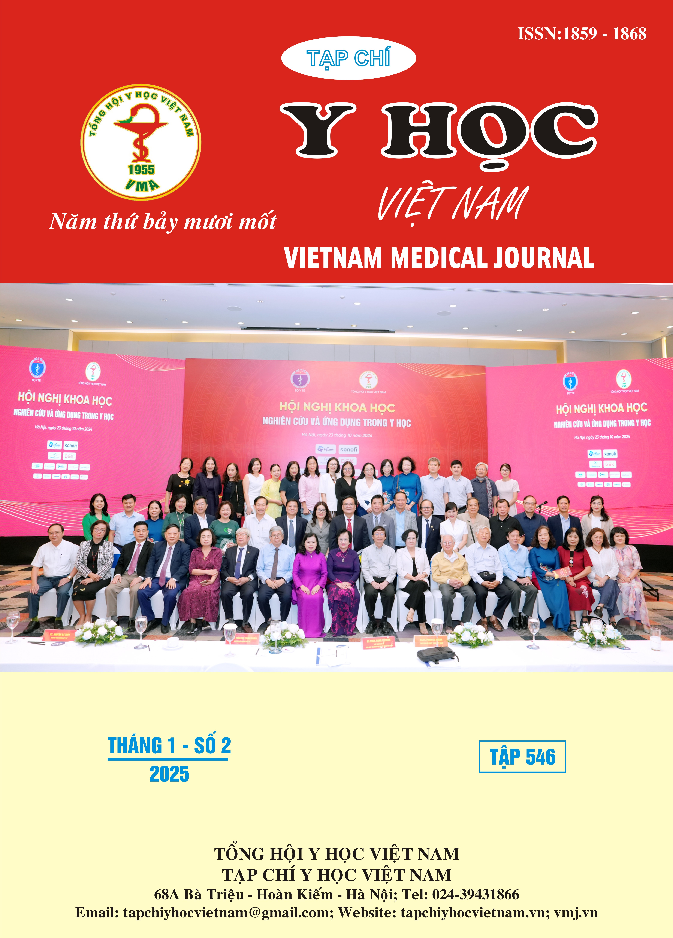WHICH THE FLUSH OR MESIAL STEP TERMINAL PLANE RELATIONSHIP OF THE SECOND PRIMARY MOLAR IS IDEAL TYPE IN DECIDUOS DENTITION?
Main Article Content
Abstract
Background: There are three types of the final step in the deciduous dentition: flush terminal plane, mesial step and distal step. Although the flush terminal plane is considered to be one of the factors of "ideal occlusion" of deciduous dentition. However, it is likely (20-50%) to become abnormal Class II molar relationship in permanent dentition. Therefore, many authors believe that the mesial step type should be regarded as the ideal type of deciduous teeth, rather than the flush plane because the normal Class I molar relationship conversion rate of this group is the highest among the three types above. In Vietnam, no studies have been done to evaluate the progression of occlusal morphology of the flush terminal plane and the mesial step group during the whole process of dentition. Therefore, we conducted a study "Which the flush or mesial step terminal plane relationship of the second primary molar is ideal type in deciduos dentition?". From the findings, appropriate prevention and intervention plans can be made to help children achieve normal Class I occlusal in the permanent dentition. Objectives: To comparison the progression of occlusal morphology in the flush plane with the mesial step group during the whole process of dentition from the deciduous to mixed and permanent dentition. Materials and methods: Longitudinal study on 48 flush terminal planes and 79 mesial step subjects of deciduous dentition. To evaluate and comparison the changes of those groups from deciduous to mixed and permanent dentition. Results: In 48 flush terminal plane relationships, when transitioning from the deciduous to mixed dentition, the conversion rate was 15% and 85% respectively compared with Class I and Class II 50% molar relationship. When changing from the mixed dentition to the permanent stage, 100% of the Class I molar relationship will maintain this correlation. For the Class II 50% molar group in the mixed dentition, when switching to the permanent stage, 63% will be converted into Class I molar, and the rest will keep the Class II 50% molar correlation. When changing from the deciduous dentition to the permanent stage, there are 69% will be converted into normal Class I molar, the rest will be converted into Class II molar relationship. Besides, in 79 mesial step relationships, when transitioning from the deciduous to the mixed dentition, the conversion rate was 49% and 51% respectively compared with Class I and Class II 50% molar relationship. When changing from the mixed dentition to the permanent stage, 85% of the Class I molar relationship will maintain this correlation, the rest will be converted into Class III and Class II 50% molar. For the Class II 50% molar group in the mixed dentition, when switching to the permanent stage, 80% will be converted into Class I molar, and the rest will keep Class II 50% molar correlation. When changing from the deciduous dentition to permanent stage, there are 82% will be converted into normal Class I molar, the rest will be converted into Class II and Class III molar relationship. Conclusion: During the development from deciduous teeth to permanent teeth, the mesial step terminal plane will be converted to normal Class I molar correlation with a very high rate (82%) and higher than 69% Class I molar relationship of flush terminal plane.
Article Details
Keywords
The flush terminal plane, mesial step in deciduous dentition.
References
2. Hoàng Tử Hùng (2001). Cắn khớp học. Nhà xuất bản Y học.
3. Nguyễn Minh Hùng, Nguyễn Thị Kim Anh (2013). Nghiên cứu dọc sự thay đổi tương quan khớp cắn vùng răng cối từ bộ răng sữa sang bộ răng vĩnh viễn. Y học TP Hồ Chí Minh. 17(2).
4. Lê Thị Cẩm Tú (2011). Tình trạng sai khớp cắn ở bộ răng sữa. Tiểu luận tốt nghiệp Bác sĩ Răng Hàm Mặt. Đại học Y Dược TP. Hồ Chí Minh.
5. Đống Khắc Thẩm (2004). Chỉnh hình răng mặt. Nhà xuất bản Y học TP. Hồ Chí Minh.
6. Bishara SE (1988). Changes in the molar relationship between the deciduous and permanent dentitions: a longitudinal study. Am J Orthod Dentofacial Orthop. 93(1):19-28.
7. Nanda RS (1973). Age changes in the occlusal pattern of deciduous dentition. J Dent Res. 52(2):221-4.
8. Tsourakis AK (2014). Class II malocclusion: The aftermath of a “perfect storm”. Seminars in Orthodontics. 20(1):59-73.


